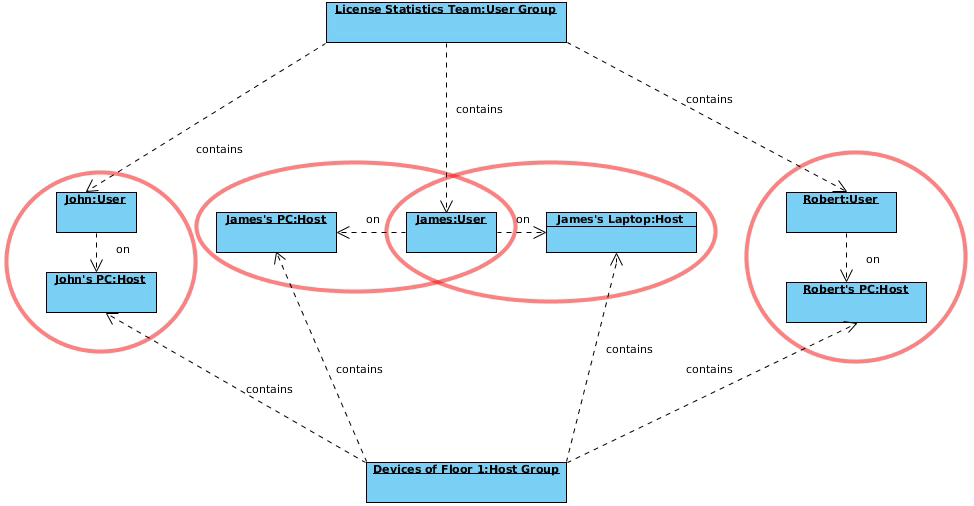The information on this page refers to License Statistics v6.15 and newer, which added new columns of information to the Usage Per User grid. If you are using a version previous to v6.15, see documentation for previous versions. |
The Usage Per User report under the Features: History section in the left navigation pane shows license usage for a selected type of aggregation, as described below. In this report, you can change time constraints as appropriate for your needs; for example, you can display license usage information based on monthly usage, but limit the displayed results to weeks.
The Usage Per User report may serve as a warning signal, letting you see whether higher usage is a one-time or a recurring event based on overall trends of license usage based on peak usage.
Types of aggregation
You can aggregate report results by:
By default, reports are aggregated by Username and Hostname.
How aggregation is applied in a report
Aggregation enables you to specify detailed levels of the produced results. License usage information can be displayed for a specified entity, letting you juxtapose one set of data with another.
Date Range
The Start Date, End Date, and Time Interval fields are interrelated; e.g., modifying the Start Date field affects the End Date field, depending on the selected Time Interval option. Selecting the "Custom" Time Interval option lets you specify the Start Date and End Date for the report.
Types of grouping (time units)
You can group feature usage information by:
- Day
- Week
- Month
- Quarter
- Year
How grouping by a unit of time works in a report
Grouping by a unit of time lets you group values from specified fields together. For example, license usage information can be limited to a month, and within that month displayed based on daily usage. Grouping works in the same way for all other available time units, for any set of selected values.
Usage Per User grid
For common column details, see the Common grid columns and default visibility settings section of the Introduction to using License Statistics pages
